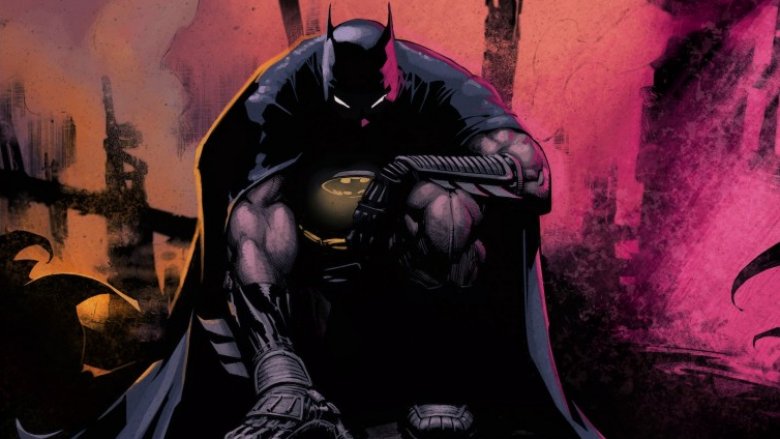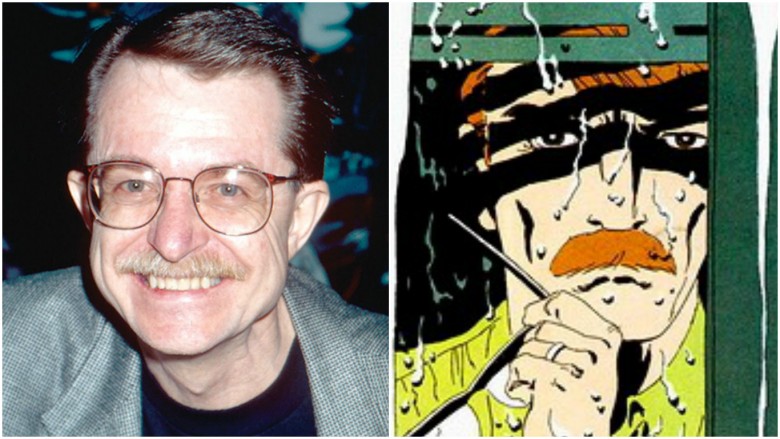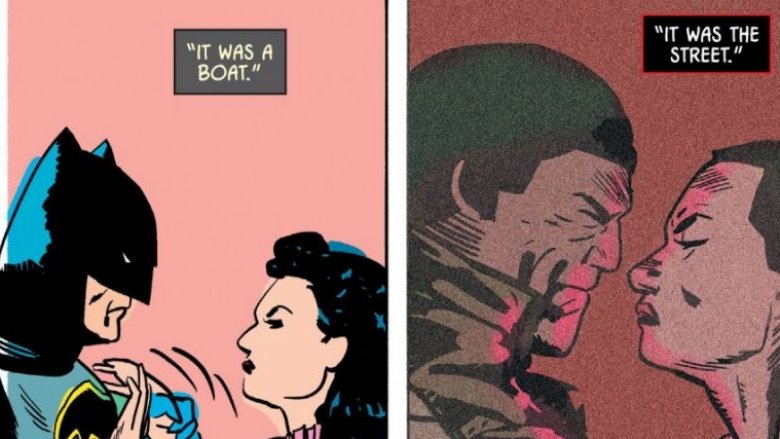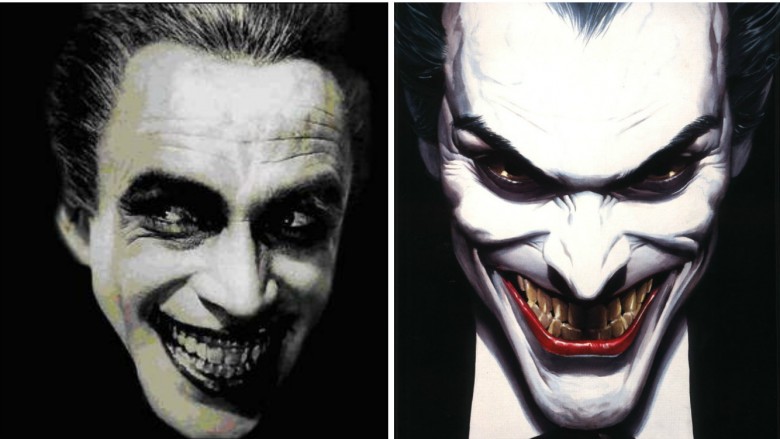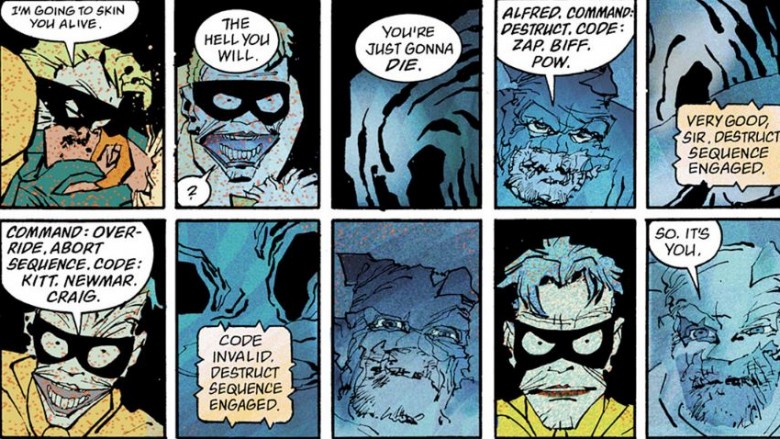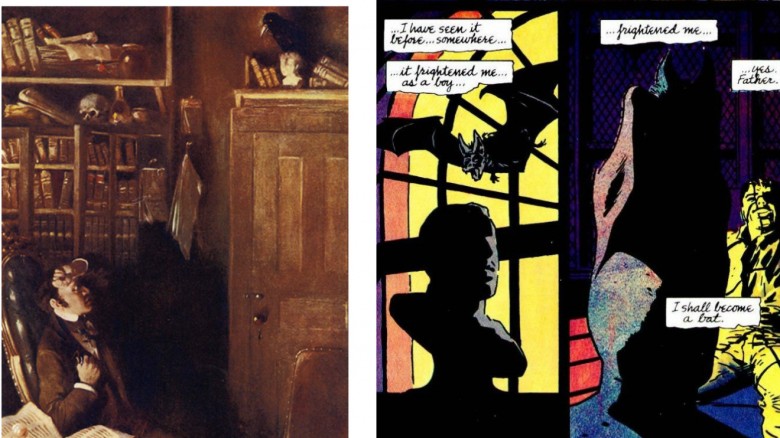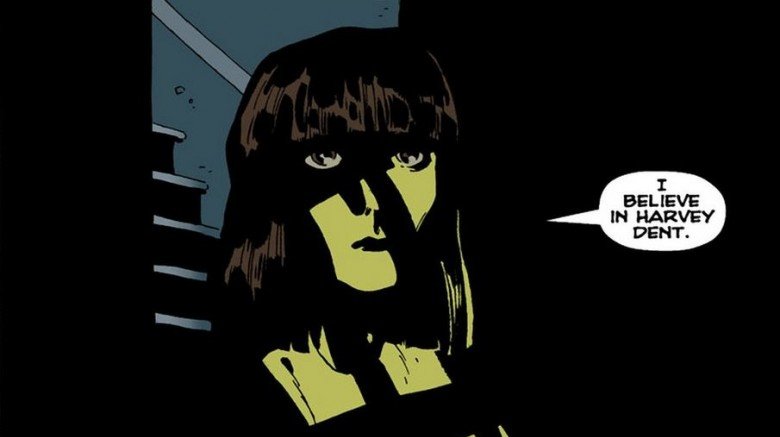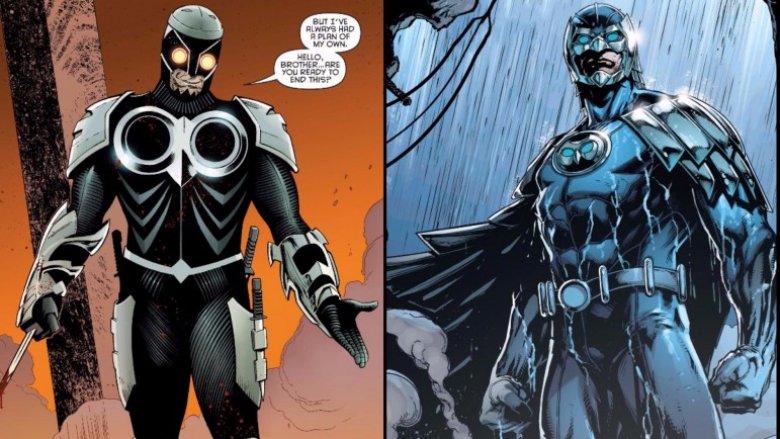Hidden Details In Batman Comics You Missed
These days, it seems like Batman mania is at a fever pitch. Batman comics are coming out of publisher DC Comics faster than a Batmobile even as the growing DC Extended Universe increasingly pivots around Ben Affleck's Batman.
The character has recently come off of a stream of amazing and award-winning Arkham-based games, and the shelves of any given toy store are bustling with more Batman figures than ever before. Because you can't take two steps without seeing more of the Caped Crusader, it's easy to imagine that you know just about everything there is to know about Batman. However, there have been plenty of awesome details and Easter eggs hidden in Batman comics over the years that all but the most hardcore Batman fans would have missed.
Fortunately, you don't need a billion dollar Batcomputer to track down all of these details and references; all you need is this handy guide to the hidden details in Batman comics you missed!
Jim Gordon's real-life influence
The Batman comic Long Halloween is rightly regarded as a classic Batman story. Writer Jeph Loeb and artist Tim Sale took on the unenviable task of following up on Frank Miller's instant classic Batman: Year One, creating a new story that continued fleshing out the early years of Batman's career. This meant following up on his growing relationship with Commissioner Gordon. And while every Bat fan knows about the vigilante's relationship with Gordon, very few people know that it was this book that cemented the more modernized look of Gordon. And it wasn't just any look—he was modeled after legendary DC writer, artist, and editor Archie Goodwin!
Archie Goodwin's contributions to DC and Batman are too numerous to count. In this particular instance, he got the ball rolling on the entire story, convincing the creative team that it was necessary to pick up where Frank Miller had left off. Secretly, the two creators modeled the appearance of James Gordon on this legendary editor. It was a sweet gesture that became bittersweet soon after: this was one of the last projects Goodwin oversaw as editor, and he died from cancer just a few years after the book came out. While his passing was a loss to the industry and to the world, it is comforting to know that he lives on as James Gordon in one of the best Batman comics ever created!
A tale of two origins
Given how long both characters have been around, it's pretty safe to say that Batman and Catwoman are carrying on with the most long-running on-again, off-again relationship in the world. The characters, their history, and their romance have been written and re-written countless times, and it's tough to keep track of the changes. Which is what made it that much funnier and refreshing in the more recent Batman #15 when the two characters finally hooked up again. Not only is it healthy for sexually repressed Batman to find an outlet for his needs (you know, aside from breaking the bones of the poor and mentally ill), but the comic used this as an excuse for the two longtime lovers/frenemies to reminisce about how they first met, providing some great Easter eggs for longtime Bat fans.
In Batman's flashbacks, he is remembering how they actually met way back in the original Batman #1. That comic had a fairly wacky plot involving Catwoman impersonating an elderly woman in an attempt to escape with some stolen jewels. Catwoman, however, is recalling how the characters first met in Frank Miller's Batman: Year One, complete with Miller's rather bold decision to portray her as a black woman (which was likely a reference to Eartha Kitt's portrayal of Catwoman and is echoed later by Miller's wacky, unused Batman film script).
The comic ultimately ends on a poignant note regarding the deep affection these characters have for each other underneath their masks. However, the playful Easter eggs serve as a reminder that the real mask is continuity itself, which makes it hard for even long-time readers to figure out the exact relationships between their favorite characters.
The true origin of The Joker
The Joker's design is, in a word, horrifying. You don't have to have an existing fear of clowns to develop a healthy fear of the Joker, a character whose pale skin and bright lips and hair make him look like a colorful corpse. In fact, it's tough to imagine an artist sitting down and coming up with the design for The Joker from scratch. However, long-time Batman fans know that nobody actually had to do that. Instead, Joker's design is based on an equally-horrific character from the appropriately-named classic movie The Man Who Laughs.
The movie in question was a silent film from 1928 that featured Conrad Veidt as a character who had received some scars as a young child that left him permanently smiling. Batman creator Bob Kane has admitted that this was pretty much the Joker's design, as Batman artist Bill Finger had previously held up a photograph of Veidt and said "here's the Joker."
Over the years, DC has played with references and homages to this old film. One Batman comic that also bore the name of The Man Who Laughs set out to tell a kind of gritty retelling of Joker's earliest adventure fighting Batman. And the notion of Joker's smile coming from scars has been played up on the big screen by both Jack Nicholson's Joker and Heath Ledger's. It turns out that the answer to Joker's frequent question in Dark Knight about where he got his scars was actually hidden in a 1928 film all along!
The Batcave destruct code
In addition to Batman: Year One, Frank Miller wrote what is arguably the most definitive Batman tale, The The Dark Knight Returns. It changed how Batman was written and perceived and continues to have a major influence, most notably on modern films like Batman v. Superman. Miller eventually wrote an inferior sequel called The Dark Knight Strikes Again, and one of its weirder twists involved a Joker-looking villain being revealed as a genetically modified and maniacally evil Dick Grayson. He now has a healing factor that would put Deadpool to shame, so when he shows up in the Batcave, Batman activates a self-destruct sequence that is intended to drop the former Robin (and everything else) into lava. Between Batman activating the self-destruct sequence and Robin's failed attempt to shut it off, we get a couple of really nice Easter eggs for long-time Bat fans.
The voice command that Batman uses to activate the destruction sequence is "Zap. Biff. Pow." Robin tries to deactivate it with an old code that Batman has since changed: "Kitt. Newmar. Craig." For younger readers in particular, these may seem like some nonsensical words to put into a destruction sequence, but there was a method behind Miller's madness.
The "zap, biff, pow" is a reference to the words that would pop up on the screen during fights in the classic Batman television show with Adam West. And from that same show, "Kitt" refers to the original Catwoman actress Eartha Kitt, and "Newmar" refers to another Catwoman actress from the show, Julie Newmar. Finally, Craig is a reference to Yvonne Craig, the original live-action Batgirl. Ultimately, it's a small moment in a bloated Bat book, but these references are awesome treats for any Batman fan that grew up watching Adam West use gadgets like shark repellent Bat spray.
Batman and Edgar Allan Poe
One of the reasons that Batman: Year One is a classic is that it provided many moments for the Caped Crusader that are now considered iconic and have been reference over and over by other writers and artists. One such moment comes from how Batman decides to become Batman. In this tale, Bruce Wayne has had an abortive attempt to fight crime after merely disguising his face, and it went bad: he has been beaten up, shot by corrupt police, and has barely made it back home. He sits in his study, staring at a bust of Thomas Wayne, and tries to figure out if he should summon Alfred to save his life. Bruce finally does summon Alfred after a giant bat crashes through the window, perching on the bust of Thomas Wayne and providing Bruce with the inspiration he needs. "Yes, father," he famously says, "I shall become a bat."
The whole scene is draped and drawn in the kind of gritty, gothic noir that typifies Frank Miller. In this case, though, he has borrowed heavily from one of the greatest gothic masters, Edgar Allan Poe. True Batman fans know that we could have had the awesome scene with the bat if Poe had not written "The Raven." Think about it: Poe's classic poem deals with a man who feels himself descending into darkness while sitting in a chamber much like the one Bruce is in. He is working through some complex emotions as a raven sits upon "the pallid bust of Pallas," just as Miller's bat perches on the bust of Thomas Wayne.
And Poe dramatically ends his poem by asserting that "my soul from out that shadow that lies floating on the floor/Shall be lifted—nevermore!" The word "nevermore" has been the raven's only response to everything, and that ending seems to symbolize that the raven has made Poe's narrator a permanent part of the darkness and shadows. Of course, this is exactly what Miller's bat is doing, with Batman deciding he would have to become a creature of shadow and darkness to inspire fear in the kinds of people who were not scared of him earlier that night.
The Dark Knight's comic book roots
Christopher Nolan's Dark Knight movie seemed like a revolution in superhero films. Led by the manic intensity of Heath Ledger's performance, the film turned the idea of superhero films on its ear by telling a noir-drenched, character-driven story that just happened to have heroes in it, as opposed to trying to repeat the same old superhero formula that we had seen before. And while the movie definitely deserves the praise that it has received for changing how we look at heroes, villains, and superhero cinema, long-time Batman fans watching the movie realized that the groundwork for this 2008 movie had been almost a decade and a half before it in the aforementioned Batman: Long Halloween comic.
One of comic writer Jeph Loeb's goals in fleshing out the early years of Batman was to explore the relationship between Bruce Wayne and Harvey Dent as well as Batman, Dent, and Commissioner Gordon. In fact, the trio of heroes make a pact to end the mob rule of Gotham City...which is exactly what we see in the Dark Knight movie. The future campaign slogan of the cinematic Harvey Dent is also liberally sprinkled through this classic comic, with Batman and other characters often thinking or saying "I believe in Harvey Dent."
Perhaps most interesting to Dark Knight fans is how the mob ultimately responds in this comic to the increasing pressure from Batman, the police, and a mysterious killer: they begin hiring villains with abilities in order to turn the tables, just as the mob in the movie reluctantly turns to the Joker for help. And, just like in the movie, they are eventually betrayed and killed by the same "freaks" they let loose. Ultimately, while Dark Knight remains a revolutionary movie, the seeds for that revolution were planted long before Heath Ledger asked anyone about his scars.
Owlman returns
One of the most recent writers to create a serious legacy of great Batman comics is Scott Snyder. He has shown a creativity and boldness in both reimagining the Dark Knight's early days while also penning modern Batman adventures unlike any we have seen before. One of Snyder's earlier major stories involved Batman uncovering The Court of Owls, a kind of secret society that had been inside Gotham City since its inception. The tale gets weirder when Batman confronts Lincoln March, a Court member who alleges that he is Thomas Wayne, Jr., a younger brother of Bruce that was kept secret. And while the comics have never confirmed nor denied his story, long-time Batman fans might recognize the seeds of this character's origins actually going back over half a century!
There are many details and visual flourishes that seem to signify that Lincoln March is Snyder's (along with amazing artist Greg Capullo) homage to the Batman villain Owlman. The character of Owlman comes from a different Earth and is basically evil Batman, and he has worked alongside a kind of evil Justice League called the Crime Syndicate of America. When Grant Morrison revived these Silver Age villains for modern continuity, he revealed that Owlman's secret identity was Thomas Wayne, Jr. There are some differences between him and Lincoln March (for instance, Owlman's Thomas is the older brother of Bruce, and Lincoln alleges to be the younger brother), but there are some surprising connections, too.
In addition to the name similarity, Lincoln March eventually uses an owl-themed costume to fight Batman, and that costume bears a resemblance to some incarnations of Owlman. Finally, the enforcers of the Court of the Owls are known as Talons, and this is the name of Owlman's Robin-esque sidekick. Ultimately, while Lincoln March may have been lying about his origins, longtime longbox comics readers know where Scott Snyder really got the idea.
